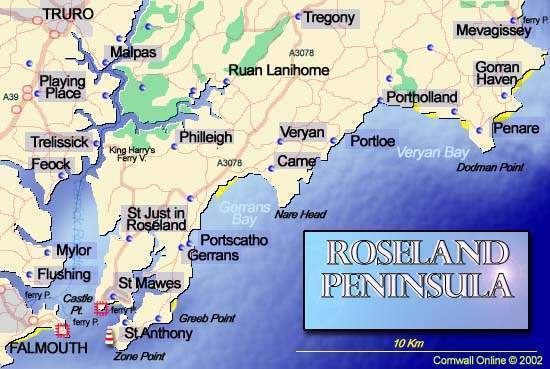 | ||
More views of the roseland peninsula south cornwall
The Roseland Peninsula, or just Roseland, (Cornish: Ros, meaning promontory) is a district of west Cornwall, England, United Kingdom. Roseland is located in the south of the county and contains the town of St Mawes and villages such as St Just and Gerrans. It is a peninsula, separated from the remainder of Cornwall by the River Fal (on the east is the English Channel).
Contents
- More views of the roseland peninsula south cornwall
- The roseland peninsula south cornwall a video guide
- History and geography
- Film
- References

Where the peninsula begins continues to be a point of discussion amongst local historians and long-time Roseland inhabitants. The village of Tregony might be considered to be outside the Roseland. If travelling by road one enters the Roseland at the bottom of Tregony Hill by either driving up Reskivers Hill to take the road to St. Mawes and Gerrans, or by taking the lower road to Ruan Lanihorne.
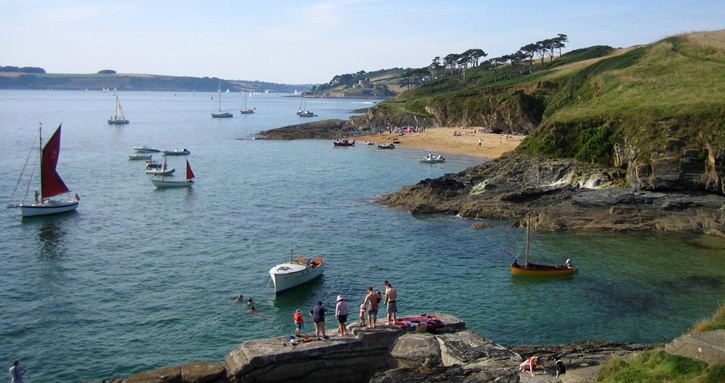
There is an electoral ward called Roseland which also covers St Mawes the population of which at the 2011 census was 3,375.

The roseland peninsula south cornwall a video guide
History and geography
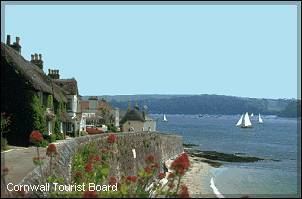
In 1584 map maker, John Norden, wrote, 'The peninsula is called by the pretty name of Roseland, being derived from Rhos, the Celtic word for heath or gorse.' He goes on to say that, "Roseland is a circuit of land lying between the creek of Falmouth haven and the sea."
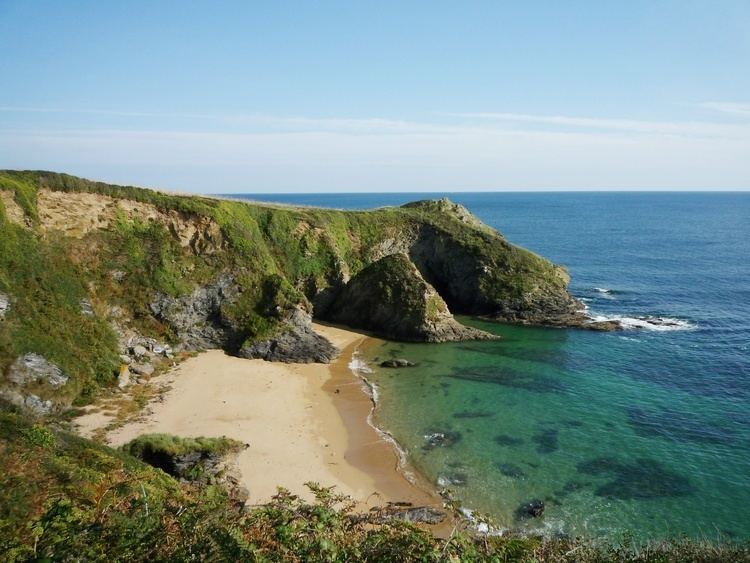
Lake's Parochial History of the County of Cornwall (1870) includes Revd John Whitaker’s, discussion of the Roseland when dealing with Philleigh parish. He notes that the villages of Veryan and Ruanlanihorne each has its church in a valley, the area which would have been inhabited first as the valleys were more sheltered and benefited from soil washed down from the hillsides. At the top of the hills lay an extensive heath (or rhos/rôs).
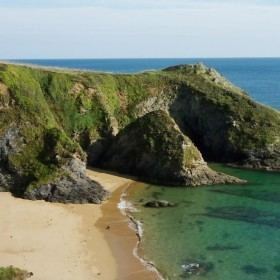
Whitaker believed that the area was first named 'Roseland' when the English came to settle in 936. The parish of Philleigh was carved out of the parish of Ruanlanihorne and was originally called Eglos-rôs. Two fields were tithable in common between Ruanlanihorne and Philleigh (Higher and Lower Congier) which he claims proves the two parishes were once one. According to Hals (in Lake’s Parochial History) St Just in Roseland was rated under the jurisdiction of Eglos-rôs (Philleigh) in the Domesday Book.
From this it seems reasonable to assume that the first people to use the term ‘Roseland’ understood it to cover the parishes which contained the ‘rhos/rôs ’, so the parishes of Veryan, Ruanlanihorne and Philleigh have a good claim to be part of the Roseland.
So it seems to make sense to regard the Roseland as starting at Daddiport Bridge at the foot of Reskivers Hill. The stream which comes down the hillside to Daddiport Bridge is the boundary between Veryan and Tregony parishes, thus continuing the water boundary of the peninsula. That is the way locals now see the Roseland Peninsula.
In The Roseland: between River and Sea, Laurence O'Toole described it rather differently, including the parishes of Gerrans, St Anthony in Roseland, St Just, and St Mawes and so only taking the parishes that protrude on that thin arm of the land.
Place House at St Anthony was the seat of the Spry family for several hundred years. It has been enviously described by Joe Bennett in his travel book Mustn't Grumble, 2006.
Film
The 2009 film documentary And Did Those Feet suggests that Jesus Christ may have visited the Roseland Peninsula. The legend of Christ's visit to England is depicted in William Blake's poem "And did those feet in ancient time".
